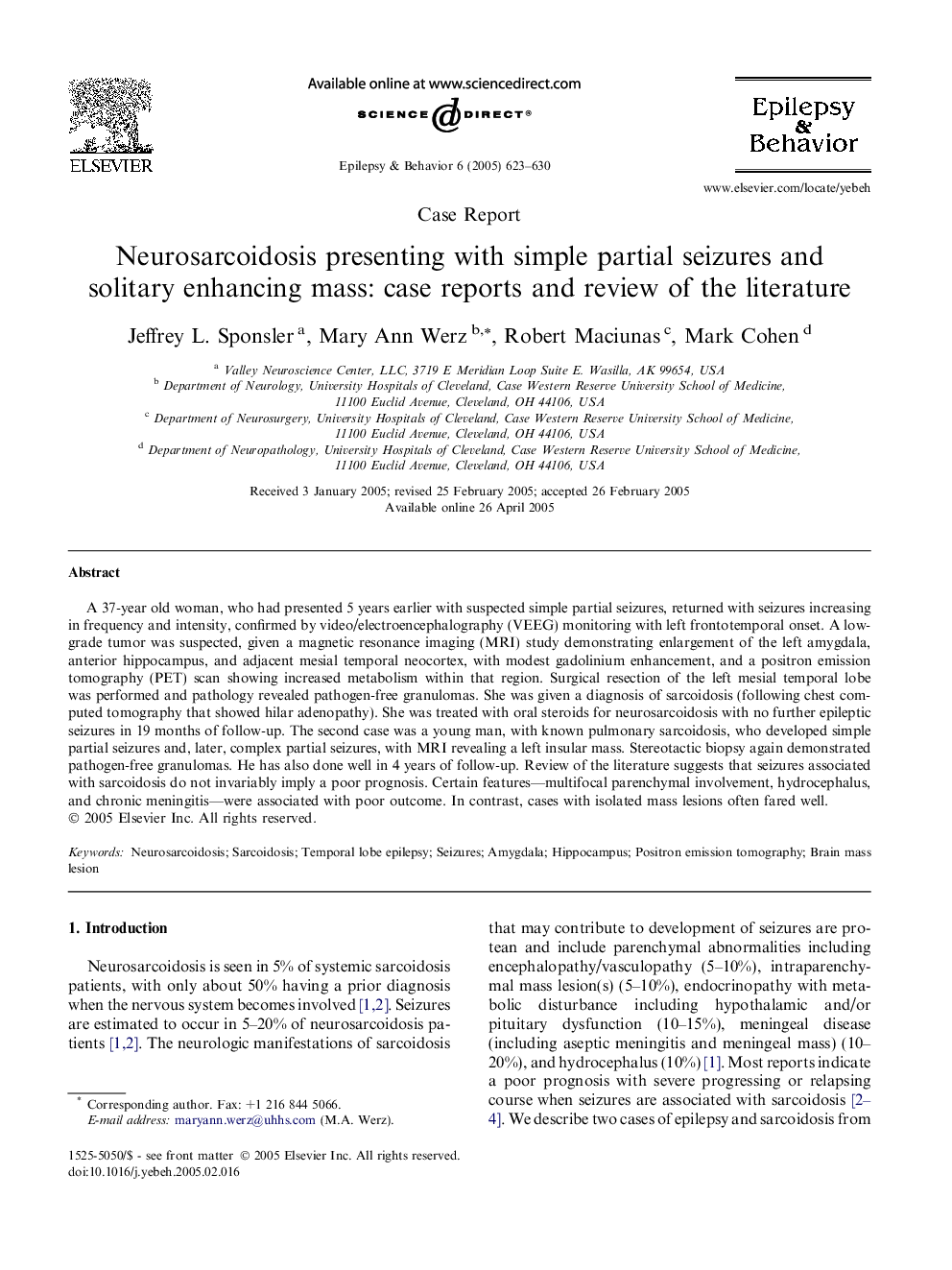| Article ID | Journal | Published Year | Pages | File Type |
|---|---|---|---|---|
| 9190225 | Epilepsy & Behavior | 2005 | 8 Pages |
Abstract
A 37-year old woman, who had presented 5 years earlier with suspected simple partial seizures, returned with seizures increasing in frequency and intensity, confirmed by video/electroencephalography (VEEG) monitoring with left frontotemporal onset. A low-grade tumor was suspected, given a magnetic resonance imaging (MRI) study demonstrating enlargement of the left amygdala, anterior hippocampus, and adjacent mesial temporal neocortex, with modest gadolinium enhancement, and a positron emission tomography (PET) scan showing increased metabolism within that region. Surgical resection of the left mesial temporal lobe was performed and pathology revealed pathogen-free granulomas. She was given a diagnosis of sarcoidosis (following chest computed tomography that showed hilar adenopathy). She was treated with oral steroids for neurosarcoidosis with no further epileptic seizures in 19 months of follow-up. The second case was a young man, with known pulmonary sarcoidosis, who developed simple partial seizures and, later, complex partial seizures, with MRI revealing a left insular mass. Stereotactic biopsy again demonstrated pathogen-free granulomas. He has also done well in 4 years of follow-up. Review of the literature suggests that seizures associated with sarcoidosis do not invariably imply a poor prognosis. Certain features-multifocal parenchymal involvement, hydrocephalus, and chronic meningitis-were associated with poor outcome. In contrast, cases with isolated mass lesions often fared well.
Keywords
Related Topics
Life Sciences
Neuroscience
Behavioral Neuroscience
Authors
Jeffrey L. Sponsler, Mary Ann Werz, Robert Maciunas, Mark Cohen,
